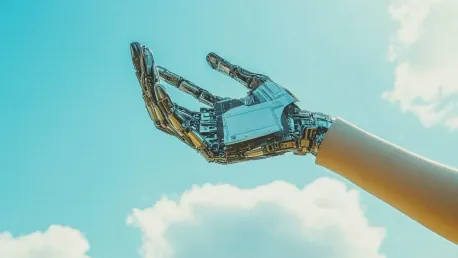The evolution and future of industrial robotic arms have been a topic of significant interest since their inception in the mid-20th century. These mechanical arms have revolutionized various industries, symbolizing industrial efficiency and defining automation. However, with the rise of humanoid robots, the future of these robotic arms seems uncertain. Exploring the historical development of industrial robotic arms, their market growth, and the emerging competition with humanoid robots offers a comprehensive picture of their transforming role within industry automation.
The Birth and Evolution of Industrial Robotic Arms
The journey of industrial robotic arms began in the 1950s with the landmark invention of the Unimate by George Devol and Joseph Engelberger. Unimate, the world’s first industrial robot, was installed at a General Motors assembly line in 1961, performing dangerous and repetitive tasks such as die casting and welding. This innovation marked the dawn of the automation era in manufacturing. Though the technology was elementary by today’s standards, its programmable nature laid the groundwork for subsequent rapid advancements. By the late 1960s, the automotive industry had begun to embrace robotic arms to meet its need for consistent and scalable production.
Significant technological enhancements in robotic arm technology characterized the 1970s. Companies like Fanuc and Kuka emerged as industry leaders, producing robots with improved precision and reliability. Innovations in materials and control systems enabled these robotic arms to handle more delicate operations such as assembly and painting. The 1980s brought about the era of computer numerical control (CNC), which facilitated the seamless integration of robotic arms with computerized production lines. The emergence of vision systems also allowed robots to “see” and adapt to their environments, expanding their applications beyond heavyweight industries to include electronics and consumer goods manufacturing.
The 1990s witnessed the increased versatility of industrial robotic arms, leading to their widespread adoption across diverse sectors such as pharmaceuticals, aerospace, and food production. Enhanced sensors and real-time control systems improved the safety and efficiency of these robots. The 2010s marked the introduction of collaborative robots (cobots) into the market. Pioneered by companies like Universal Robots, cobots were designed to work safely alongside humans without the need for extensive safety barriers. These robots featured force-limiting sensors, enabling them to halt operations immediately upon contact with a human. The advent of cobots democratized automation, making it accessible to smaller businesses and altering the perception of robots as inherently hazardous.
The Rise of Collaborative Robots
The last five years have seen a dramatic leap in the abilities of robotic arms. Collaborative robots now dominate the market, with even traditional industrial arms incorporating features inspired by cobots to enhance safety and usability. Advanced machine learning algorithms have empowered robotic arms to autonomously and precisely perform complex tasks such as quality inspection, material handling, and assembling intricate components. This technological leap has rendered robotic arms more versatile and capable than ever before, making them an integral component of modern manufacturing processes.
Despite their capacity for collaboration, heavy-duty robots designed for welding, palletizing, or lifting large components remain isolated from human workers due to their size and strength. This necessitates stringent safety measures to ensure workplace safety. The exponential market growth of industrial robotic arms is notable, with the number of industrial robots in operation worldwide exceeding 3.5 million in 2022, a substantial increase from just a few hundred in the 1960s. Driven by rising labor costs, the need for enhanced productivity, and continuous technological advancements, this growth has been substantial, revolutionizing the manufacturing landscape.
Asia, particularly China, has become the largest market for industrial robotic arms, with industries in the region accounting for over 50% of global robot installations. Europe and North America also have significant investments in automation in the automotive, electronics, and logistics sectors. The increasing need for automation in various industries has propelled the demand for robotic arms, making them an indispensable tool in manufacturing. These regions have heavily invested in automation technologies to meet the growing demand for efficiency and productivity in their respective industries.
Future Prospects of Industrial Robotic Arms
Looking toward the future, industrial robotic arms are anticipated to become even more intelligent, adaptive, and efficient. Enhancements in artificial intelligence (AI) and machine vision are expected to enable these robots to learn new tasks without extensive reprogramming. Modular designs may simplify customization for specific applications, while material advancements could reduce the size and weight of the robots, making them more versatile and efficient. Sustainability concerns will likely drive the demand for energy-efficient robots to minimize their environmental impact, promoting the development of eco-friendly robotic technologies.
Furthermore, integrating the Internet of Things (IoT) will support predictive maintenance and real-time monitoring, thereby further enhancing operational efficiency. By connecting robotic arms to IoT networks, manufacturers can optimize performance, reduce downtime, and improve overall productivity. Despite these advancements, the competition from humanoid robots is intensifying, introducing a new dynamic to the industrial automation landscape. The emergence of humanoid robots presents new challenges and opportunities for the future of industrial robotic arms.
The Emergence of Humanoid Robots
The evolution and future prospects of industrial robotic arms have garnered significant attention since their emergence in the mid-20th century. These highly sophisticated mechanical arms have transformed numerous sectors, epitomizing industrial efficiency and setting a benchmark for automation. However, with the advent of humanoid robots, the fate of these robotic arms appears less certain. By examining the historical journey of industrial robotic arms, their market trajectory, and the rising competition from humanoid robots, we can gain a comprehensive understanding of their evolving role in industrial automation. It’s clear that industrial robotic arms have played a pivotal role in shaping modern manufacturing, from streamlining assembly lines to enhancing precision and productivity. The technological advancements and adaptations they undergo will continue to influence their relevance in an increasingly automated world. As humanoid robots begin to make their mark, industries must evaluate the benefits and limitations of both technologies to determine which provides a more effective solution for their automation needs.









